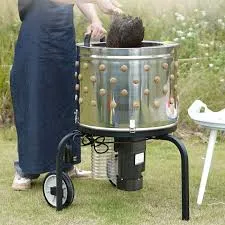animal feed processing machine
Dec . 13, 2024 21:08 Back to list
animal feed processing machine
Understanding Animal Feed Processing Machines
Animal feed processing machines play a crucial role in the agriculture sector, specifically in the production of high-quality feed for livestock, poultry, and aquaculture. With the rising global demand for animal products, efficient feed processing is more essential than ever. This article explores the significance, types, and benefits of these machines in modern farming.
The Importance of Animal Feed Processing
The nutritional value of animal feed directly affects the growth, health, and productivity of livestock. Well-processed feed can improve the feed conversion ratio, leading to better weight gain in animals and, ultimately, more efficient meat, milk, or egg production. Furthermore, with the increasing population and the consequent rise in demand for animal protein, producing large quantities of feed that meet specific nutritional requirements is imperative. This is where animal feed processing machines come into play.
Types of Animal Feed Processing Machines
1. Hammer Mills These are used for grinding raw materials into fine particles, ensuring a uniform size for better digestion by animals. Hammer mills can handle various feed ingredients, including grains, corn, and legumes, providing flexibility in feed formulation.
2. Mixers Once the raw materials are ground, they need to be homogeneously mixed. Feed mixers ensure that the different components of the feed are evenly distributed, which is essential for balanced nutrition. There are several types of mixers, such as vertical and horizontal mixers, each serving specific needs based on the scale of production.
3. Pellet Mill This is one of the most critical machines in feed processing. Pellet mills compress feed ingredients into pellet form, which not only enhances the digestibility of the feed but also reduces waste. Pelleted feed is easier to transport and store, making it an ideal choice for many farmers.
4. Cooling and Drying Equipment After pelleting, the feed must be cooled and dried to ensure its stability and shelf life. Coolers and dryers help in reducing the temperature and moisture content of the feed, preventing spoilage and maintaining quality.
animal feed processing machine

5. Packaging Machines The final step in the feed processing line involves packaging the finished product. Packaging machines play a vital role in maintaining the feed's quality during transportation and storage, as well as in providing information to consumers.
Benefits of Using Feed Processing Machines
1. Enhanced Feed Quality With the ability to finely grind ingredients and ensure even mixing, these machines significantly improve the nutritional quality of animal feed. This leads to healthier livestock and better production outcomes.
2. Cost Efficiency By producing feed in-house using processing machines, farmers can save on feed costs, reduce transportation expenses, and customize their feed formulations according to their specific requirements.
3. Scalability Automated feed processing systems allow farmers to scale their operations easily. Whether a small farm or a large-scale livestock producer, machines can be configured to meet varying production capacities.
4. Waste Reduction Efficient processing reduces feed waste. By optimizing ingredient proportions and using technologies like pelleting, farmers can minimize leftovers, leading to a more sustainable operation.
5. Convenience and Labor Saving Modern feed processing machines are often automated, reducing the need for manual labor. This allows farmers to focus on other essential activities, increasing overall productivity.
Conclusion
Animal feed processing machines are indispensable in today's agricultural landscape. They facilitate the production of high-quality, nutritionally balanced feed, which is vital for maximizing livestock performance and ensuring food security. As technology continues to advance, these machines are becoming more efficient and user-friendly, allowing farmers to adapt to changing market demands. Investing in the right feed processing equipment not only enhances the profitability of livestock farming but also contributes to sustainable agricultural practices by optimizing resource use and minimizing waste. As we look towards the future, the role of these machines will only continue to grow in importance, making them an integral part of modern farming operations.
-
High Performance Exhaust Fan – Efficient Ventilation Solutions for Home
NewsJun.10,2025
-
High-Quality Gestation Pen for Sows Durable Mobile Pig Pen & Simple Pig Pen Solutions
NewsJun.10,2025
-
High Quality Rabbit Cage Double Tier Designs & Welded Wire Mesh Supplier
NewsJun.10,2025
-
Floating Fish Feed Machine - High Efficiency Floating Fish Feed Extruder for Small Scale Production
NewsJun.10,2025
-
Premium Poultry Housing Solutions Mobile & Commercial Free Range Options
NewsJun.10,2025
-
Industrial FRP Fans Corrosion-Resistant Blades & Centrifugal Systems
NewsJun.09,2025






